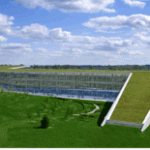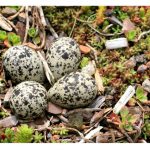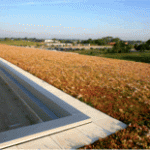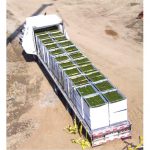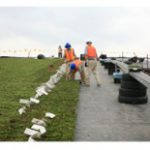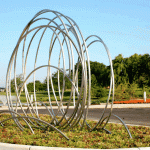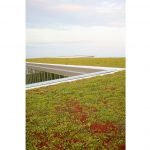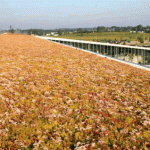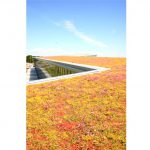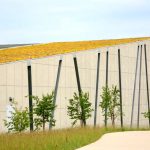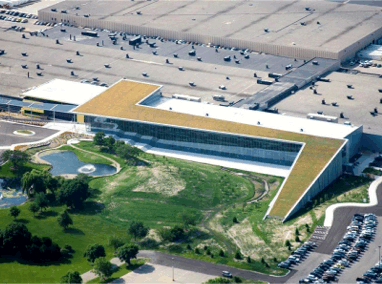
Additional Resources
Haworth Corporate Headquarters is located at One Haworth Center, Holland, MI 49423; 616-393-3000. Although the greenroof is inaccessible, it is highly visible and the HQ is open for tours. Read about the One Haworth Center renovation at their website, where you can take an online tour or plan your visit. Download the Haworth PDF “Sustainability by Design” case study. Read the September 10, 2011 GPW: Haworth Corporate Headquarters Sky Gardens Blog post by Linda Velazquez, the March 31, 2010 Pitch Perfect by Linda McIntyre in Eco-Structure, the June 2008 PDF from Metropolis Magazine “Walk the Talk” by Aric Chen, and the May 30, 2008 Haworth headquarters revamp is a model transformation by Blair Kamin in The Chicago Tribune. Learn about LiveRoof in The Greenroof Directory. The Haworth Corporate Headquarters was featured in the 2010 Greenroofs of the World? Calendar from Greenroofs.com for the month of August. For additional information on the Haworth Corporate Headquarters, contact Shannon Eckhart of Turner Construction Company at: seckhart@tcco.com or 212.229.6084.
In 2006 Haworth launched perhaps its most ambitious building project to date: the renovation of its world headquarters in Holland, Michigan, known as One Haworth Center.
“A sun-filled atrium. Sedum plantings on the roof. Over 750 workstations with access to daylight and views. The new One Haworth Center in Holland, Michigan is a 300,000 square foot testament to adaptable, user-focused, sustainable design. The new Haworth corporate headquarters incorporates many of the principles we encourage our clients to adopt every day. By incorporating Haworth’s organic workspace solutions throughout, the interior will suit our corporate needs today, and allow us to mold spaces to evolving business needs and user workstyles.
“The fully renovated environment will function as a living laboratory of innovative organic workspace solutions. In line with our sustainability objectives, One Haworth Center is registered for LEED?-NC Gold certification by the U.S. Green Building Council,” (Haworth website, see below).
Yet, its west end slopes down six stories to grade while also narrowing in width from 60 feet at the top to 24 feet at the bottom, and sloped roofs are challenging horticultural environments. When the manufacturer of its aluminum edging expressed concern about hydraulic pressure during severe storms, horticulturist and system designer Dave MacKenzie of LiveRoof shared the concern with the design team, which resulted in an engineering review. As a result, the modules were modified for increased subdrainage and three elevated steel barriers were installed to help regulate flow. Larger drain holes also were drilled into the edging at the base.
So, in October, 2007, the Haworth Corporate Headquarters roof was waterproofed with Firestone ISO 95+ and ballasted EPDM and planted with Hortech / LiveRoof LLC, recycled interlocking modular units – LiveRoof Modular Green Roof System ? Standard 4? System. The roof also includes 5,000 sf of reflective white pavers. The roof has performed well during at least two 100-year storms since its installation in 2007.
Here are just three areas where the Haworth Corporate Headquarters captured LEED credits (see: “Sustainability by Design” below): The Green Roof – Highly Reflective Roof accounts for the following LEED Contribution in SS (Sustainable Sites) and MR (Material Resources): Heat Island Effect-Roof; Recycled Content; Regional Materials.
Deconstruction: 3,966 yards of waste materials generated during phase one deconstruction; over 99% re-used or recycled. Strategies included converting 9.23 tons of old window glass and 3.25 tons of concrete waste dust from Haworth manufacturing operations into over 8,000 concrete blocks (52% recycled glass, 2.5% concrete dust). LEED Contribution in MR: Construction Waste Management: Divert 50%/75%/over 90% (for innovation credit) from Disposal; Recycled Content
Landscaping: Multiple vegetated bioswales along the building and parking areas utilize native plants to absorb and filter stormwater and capture pollutants. LEED Contribution in SS and WE (Water Efficiency): Water Efficient Landscaping; Stormwater Design: Quality Control; Site Development: Protect or Restore Habitat.
 Greenroofs.comConnecting the Planet + Living Architecture
Greenroofs.comConnecting the Planet + Living Architecture
